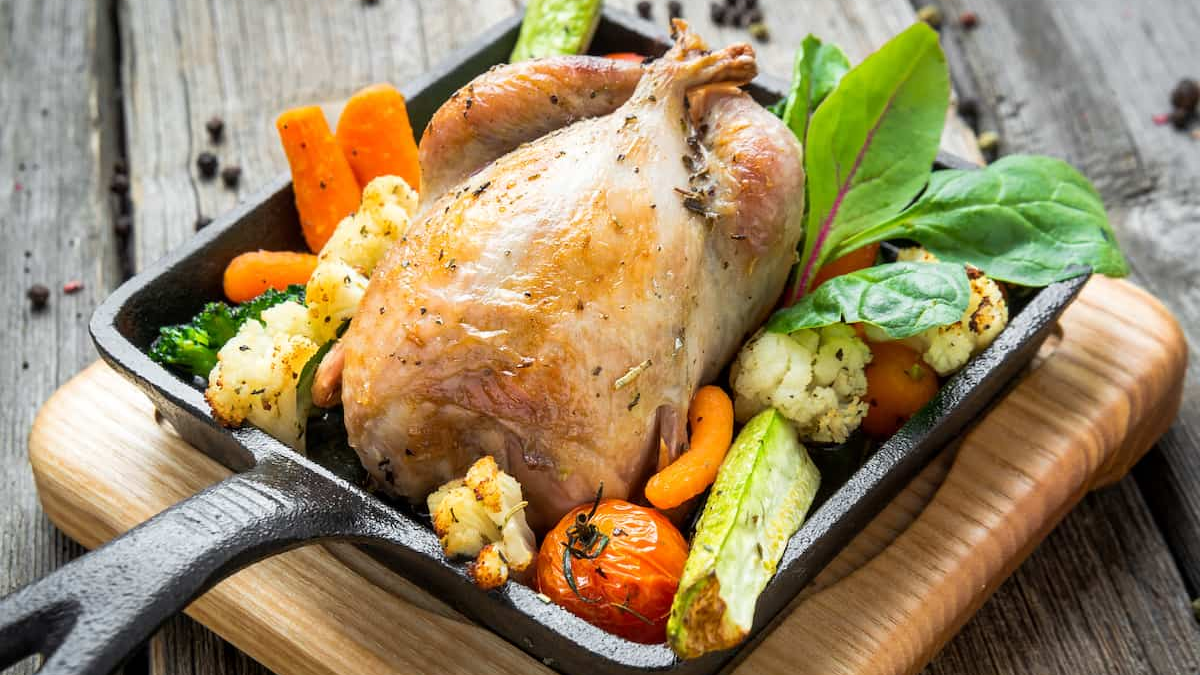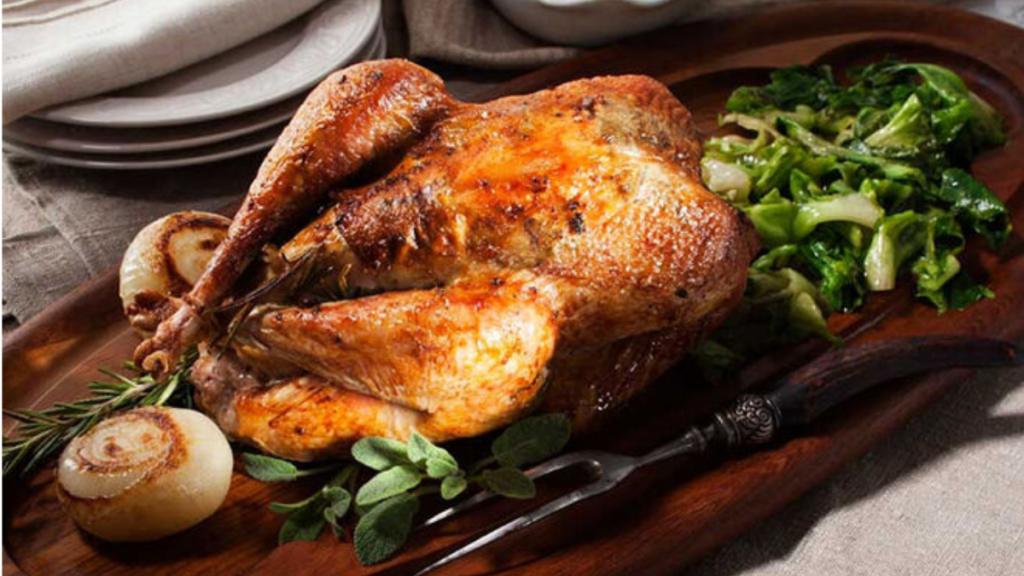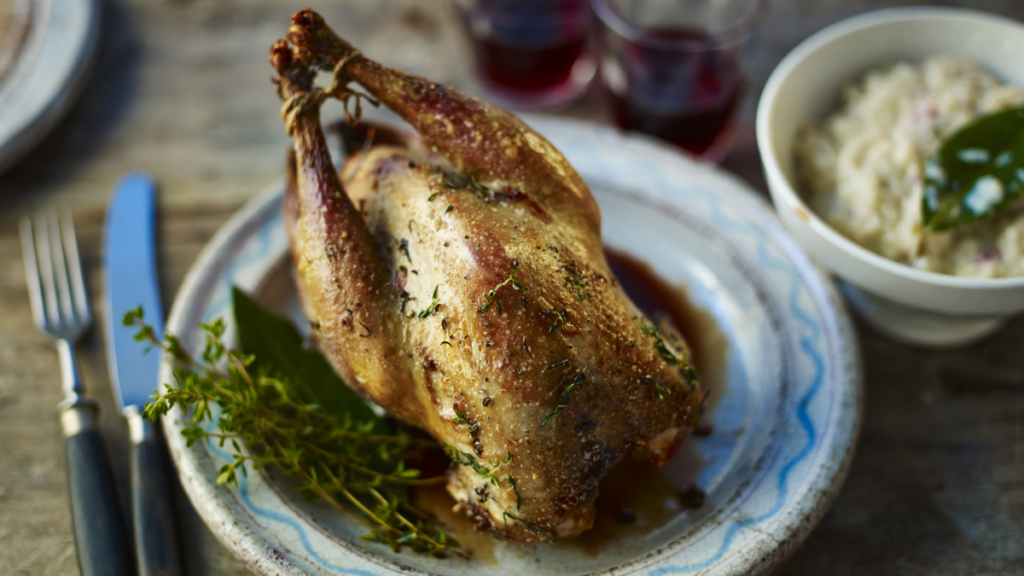The pheasant is tender, succulent, and slightly gamey when appropriately cooked. It’s a delicious bird to cook, but you must know how to do it correctly. Pheasant can be substituted for chicken or turkey in various recipes, but there are some guidelines to ensure that the bird is cooked to perfection and that you get the most out of it. Pheasant meat is denser and leaner than meat from an indoor-raised bird, so it is succulent and soft to add more fat to the bird. Continue reading for a step-by-step guide on how to roast pheasant and some other helpful hints.
The meat of a pheasant is leaner and denser than that of an indoor-raised broiler bird, so it must be cooked carefully to avoid drying out. It’s also why older pheasant legs should be simmered or in a casserole. Running causes pheasants to develop strong leg muscles, which slow cooking breaks down for tender, melt-in-the-mouth meat.
What is Pheasant?
Pheasants are birds belonging to the Phasianidae family of the order Galliformes. Although introduced (and captive) populations can be found worldwide, the pheasant genera’s native range is limited to Eurasia. Pheasants belong to the Phasianidae and Pavoninae subfamilies. They are often more closely related to smaller phasianids, grouse, and turkey (formerly classified in Perdicinae, Tetraoninae, and Meleagridinae) than other pheasants.
Pheasants are known for their strong sexual dimorphism, with males sporting bright colours and adornments like wattles. Males have longer tails and are typically larger than females, and males have no role in child-rearing.
What do Pheasants Eat?
Pheasants eat fruit, seeds, insects, and even small mammals in the wild. Pheasants raised on farms are usually fed a nutritious diet of mixed grains, corn, and seeds, and they are not given any meat to eat and are not fed a fatty diet. As a result, the pheasant is an excellent source of lean protein.
Pheasant meat is high in vitamins B-6 and B-12 and high in protein, and it is low in sodium and contains essential minerals like selenium and potassium. Overall, the pheasant is not only a delicious and exotic dish, and it’s also a nutritious and healthy option.
How to Cook Pheasant?
When it comes to cooking pheasant, there are several good options. You will want to add plenty of fat to keep the bird soft and juicy, no matter which method you choose. Roasting a pheasant in the oven is the most delicious way to prepare it. When roasting a pheasant, make sure the bird is well-fatted. This will keep it soft and tender while providing enough juice to keep it flavorful.
Ingredients
For the Marinade:
- 1/3 cup dry red wine
- Three tablespoons of red wine or balsamic vinegar
- Two tablespoons shallots, minced
- 1/4 cup olive oil
- One tablespoon of granulated sugar
- One tablespoon of minced garlic
- One tablespoon of dry mustard
- One teaspoon of finely chopped fresh oregano
- One tablespoon of finely chopped fresh basil
- One tablespoon finely chopped fresh marjoram
- One teaspoon salt
- 1/4 teaspoon freshly ground black pepper
For the Pheasant:
- 1 (2- to 3-pound) whole pheasant, preferably farm-raised
- 1/4 teaspoon salt, optional
- One small onion halved
Steps to Make it
Here are the steps to follow:
-
Gather the ingredients.
-
In a large zip-top plastic bag, combine wine (or water), vinegar, shallots, olive oil, sugar, garlic, dry mustard, oregano, basil, marjoram, and one teaspoon of salt and pepper until well mixed.
-
Sprinkle salt in the inside cavity of the pheasant, if desired. Place the whole bird in the marinade, moving it around, so the marinade reaches all parts of the bird. Refrigerate it for 30 minutes.
-
Heat the oven to 325 F.
-
Remove the pheasant from the marinade, but do not rinse it off.
-
Place the bird in a lidded roasting pan that is slightly bigger than the bird. Place bird breast-side up in the roasting pan. Place the halved onion in the cavity of the bird. Cover and roast for 30 minutes.
-
Remove the lid, baste the bird and let it continue to roast for approximately 30 more minutes without the lid so it will brown. The pheasant is done when the thighs move quickly, and the juices run clear.
-
Remove the pheasant and allow the meat to rest for at least 5 minutes before carving and serving.
How do you Carve a Pheasant?
Carving a pheasant is much the same as carving a chicken. The trick is to use a very sharp knife. Place your fork in the center of the breast and slice downwards in a short quick motion. The meat should come away from the bone. If the breast pieces are substantial, you can slice them up into smaller pieces. Now cut off the wings, and separate the legs and thighs. Serve with a selection of vegetables to suit your taste.
What do Pheasants Taste Like?
Pheasants raised on farms have mostly white meat with a taste similar to chicken and a subtle gamey undertone. Because it is a lean bird, overcooking it will result in dry, tasteless meat. Gamey, spicy, and aromatic, wild pheasants have a more robust, more distinct flavor. Because these birds are much more active than farm-bred birds, they are leaner and require extra caution when cooking. A wild pheasant’s flavor varies depending on its habitat and available food sources.
Tips for Cooking Pheasant
Here are the tips for a cooking pheasant:
- Pheasant can be used in many different recipes that call for pork, turkey, or chicken. The natural flavor of pheasant is versatile and adaptable to many different meals.
- Pheasant contains little fat, so you need to add fat to the bird when cooking. If you roast the bird, you need to ensure it has enough additional fat to retain moisture.
- The bird should reach an internal temperature of around 165 degrees Fahrenheit. And it should then be covered and left to reach an internal temperature of 180 degrees Fahrenheit.
- YoIt would help if you left the pheasant to rest after it has been cooked to allow for juices to settle in the meat. This ensures that the meat remains juicy.
- Pheasant is best served with simple sauces or marinades such as cranberry sauce, which is sweet and savory. This pairs well with the gamey bird.
- You can serve pheasant with everyday side dishes such as green beans, mashed potatoes, corn on the cob, wild rice, and salad.
- There are many ways to cook pheasant. It can be roasted, braised, barbecued, sautéed, and cooked; you can cook pheasant almost any way you please.
Can you Remove the Gamey Taste from the Pheasant?
You can try to remove the gamey flavor of pheasant before cooking if you don’t like it. One method is to soak the pheasant in buttermilk, saltwater, or water mixed with apple cider vinegar and soak the pheasant overnight. Still, even a few hours will help remove some of the gamey flflavorsRemove the fat and silver skin from the meat to reduce the gamey flavor further. Because pheasant is a lean bird, there shouldn’t be too much fat to remove. To keep the meat tender, you’ll need to add more fat, such as goose fat or butter.
Facts About Pheasants
- Pheasants are birds native to Asia and can be identified by their long tail. The male has bright, showy plumage while the female is an essential shade of brown. They are gallinaceous birds and are a part of the faPhasianidae family. They can run at 45 mph and have excellent sight and hearing when making a tricky bird to hunt.
- Wild pheasants are challenging to pluck, so they are often skinned w, which results in a layer of fat being stripped off. Using lard or bringing the bird can help offset the leanness.
- Flavors that pair well with pheasant include paprika, cumin, cilantro, sage, and thyme.
- Sweet flavours like prunes, apples, cider, and currants also taste good in c
Conclusion
Pheasant meat has a chicken-like flavour and texture, with a gamey undertone. It’s an excellent starting step for people seeking a more daring meme than chicken but without the CK’s gaminess.
If you’re making pheasant at home, pay attention to the recipe and follow the cooking time recommendations. Because this sort of fowl is lean, it will dry up rapidly if overcooked. Unlike chicken flesh, which should always be thoroughly cooked, the pheasant is a lean bird that benefits from being left a little pink. However, it should not be served as rare as duck flesh.


